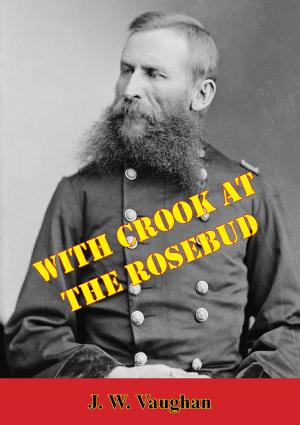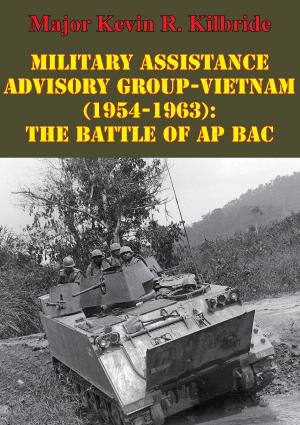The Impact Of An Operational Void: The Strategic Hamlet Program, 1961-1963
Nonfiction, History, Military, Vietnam War, Asian, United States| Author: | Major Gregory B. Conover | ISBN: | 9781786250063 |
| Publisher: | Normanby Press | Publication: | November 6, 2015 |
| Imprint: | Normanby Press | Language: | English |
| Author: | Major Gregory B. Conover |
| ISBN: | 9781786250063 |
| Publisher: | Normanby Press |
| Publication: | November 6, 2015 |
| Imprint: | Normanby Press |
| Language: | English |
The Vietnam conflict spread dissension into every corner of our political and cultural environment and shattered the foreign policy consensus that had guided US relations since World War II. The initial combined effort of the United States and South Vietnam to defeat the insurgency was the Strategic Hamlet Program. This monograph argues that the Strategic Hamlet Program failed due to the absence of an operational link between strategic concept and tactical execution.
The monograph initially reviews the strategic context that existed in South Vietnam during the critical period of 1961-1963, that window in time in which the United States first became an active and full-fledged ally of the South Vietnamese. This review establishes that the two partners held very different perspectives on the conflict and had different objectives in mind when they entered into the Strategic Hamlet Program as a combined effort.
The author identifies four principal lessons. First, one should avoid attempting to accomplish significant political or social reforms while simultaneously trying to conduct a major counter insurgency operation. Second, for a program to be effective, there is an absolute requirement to establish an operational link between strategic concept and tactical execution. Third, there exists an inherent “influence dilemma” that every third party must face in a counter insurgency effort. Finally, every insurgency/counterinsurgency is unique and must be and judged on its own merits.
The monograph concludes by arguing that the strategic hamlet approach does have utility as a general counterinsurgency strategy in certain types of situations and suggests encadrement as a means for attaining the critical all-requirement for local security in such an effort.
The Vietnam conflict spread dissension into every corner of our political and cultural environment and shattered the foreign policy consensus that had guided US relations since World War II. The initial combined effort of the United States and South Vietnam to defeat the insurgency was the Strategic Hamlet Program. This monograph argues that the Strategic Hamlet Program failed due to the absence of an operational link between strategic concept and tactical execution.
The monograph initially reviews the strategic context that existed in South Vietnam during the critical period of 1961-1963, that window in time in which the United States first became an active and full-fledged ally of the South Vietnamese. This review establishes that the two partners held very different perspectives on the conflict and had different objectives in mind when they entered into the Strategic Hamlet Program as a combined effort.
The author identifies four principal lessons. First, one should avoid attempting to accomplish significant political or social reforms while simultaneously trying to conduct a major counter insurgency operation. Second, for a program to be effective, there is an absolute requirement to establish an operational link between strategic concept and tactical execution. Third, there exists an inherent “influence dilemma” that every third party must face in a counter insurgency effort. Finally, every insurgency/counterinsurgency is unique and must be and judged on its own merits.
The monograph concludes by arguing that the strategic hamlet approach does have utility as a general counterinsurgency strategy in certain types of situations and suggests encadrement as a means for attaining the critical all-requirement for local security in such an effort.



![Cover of the book The Tale Of Two Bridges And The Battle For The Skies Over North Vietnam [Illustrated Edition] by Major Gregory B. Conover](https://www.kuoky.com/images/2014/august/300x300/9781782898924-xfHj_300x.jpg)

![Cover of the book History Of The Indian Mutiny Of 1857-8 – Vol. VI [Illustrated Edition] by Major Gregory B. Conover](https://www.kuoky.com/images/2014/june/300x300/9781782892120-v6PR_300x.jpg)




![Cover of the book The War In The Crimea [Illustrated Edition] by Major Gregory B. Conover](https://www.kuoky.com/images/2014/august/300x300/9781782895510-86ue_300x.jpg)

![Cover of the book The Stars Bear Witness [Illustrated Edition] by Major Gregory B. Conover](https://www.kuoky.com/images/2015/november/300x300/9781786254757-THHk_300x.jpg)
![Cover of the book U.S. Marine Operations In Korea 1950-1953: Volume II - The Inchon-Seoul Operation [Illustrated Edition] by Major Gregory B. Conover](https://www.kuoky.com/images/2015/november/300x300/9781786254276-pCbo_300x.jpg)

